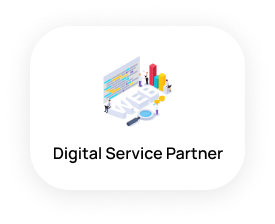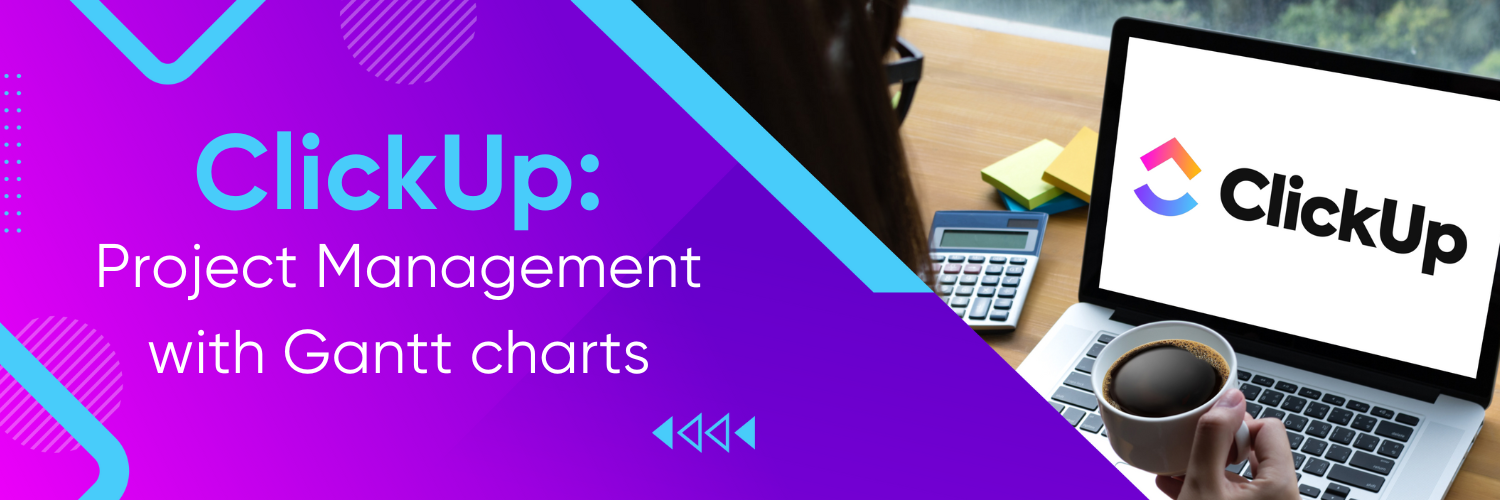ClickUp and Gantt Charts
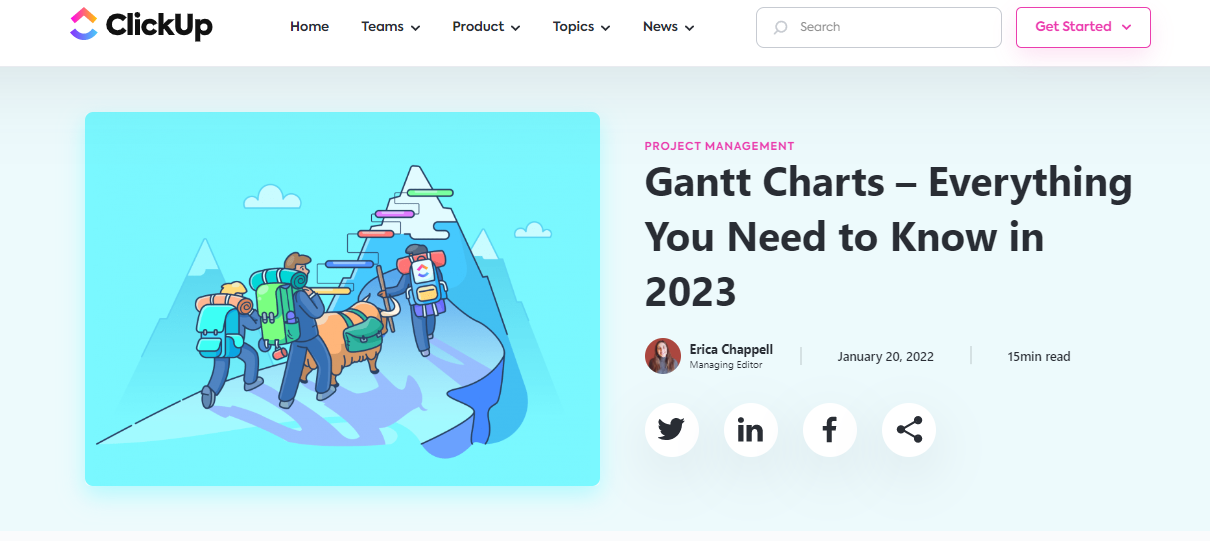
ClickUp is a modern project management platform that enables teams to work together with ease. This comprehensive solution offers a wide range of features that can be used to create, track, and monitor projects of all sizes. From Gantt charts to task management, ClickUp makes it easy to take projects from concept to completion.
The Gantt chart feature stands out as a powerful tool for visualizing complex projects. It allows users to create tasks and assign them to team members, set dependencies between tasks, and adjust the timeline as needed. This feature also enables users to quickly see which tasks are running behind or ahead of schedule, making it easier to keep projects on track.
What is ClickUp?

ClickUp is a comprehensive project management platform that streamlines collaboration for teams of all sizes. It is designed to increase productivity and visibility while catering to the particular needs of individual teams. Its features include task creation, project tracking, and resource management for a streamlined workflow.
ClickUp provides an easy-to-navigate user interface with a personalized dashboard, task lists, and customizable views. It has a wide range of features that are designed to improve and simplify the way teams work together, such as views for time tracking, customizable workflow automation, and team collaboration boards.
The platform is designed to be completely flexible and customizable, allowing teams to tailor their workflows to fit their specific needs. It also allows users to set up their own personal and team spaces and allows them to access it from any device with an internet connection. What’s more, the platform offers in-app collaboration features such as threaded conversations, task assignments, and comment threads that make work and communication more efficient.
ClickUp also offers powerful integrations, allowing teams to connect with other services such as HubSpot, Google Drive, and Slack. This makes it easier to move work and collaborate with other teams, making the whole process easier and more efficient.
Get 10-15% discount on ClickUp! Contact Us.
Benefits of Using ClickUp
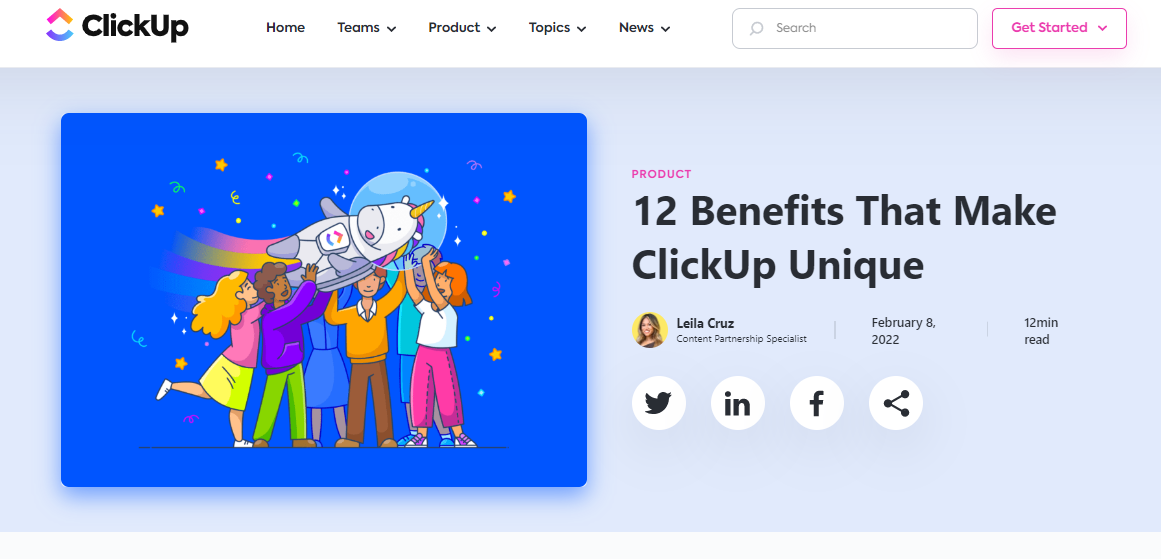
Having discussed the overview of the platform, let us take a look at the benefits of using ClickUp. This incredible platform offers a wide range of features to help users organize their tasks and stay on top of their work.
- Flexibility: With ClickUp, users have the freedom to customize the interface to their preferences. They can create task lists, assign deadlines to tasks, and even set up recurring tasks.
- Multiple task views: ClickUp offers users the ability to create tasks in multiple task views, such as a list view, board view, and calendar view. This feature allows users to quickly check their progress and prioritize tasks.
- Collaboration capabilities: This platform makes it easy for users to share tasks, assign tasks to team members, and hold conversations within each task. It also makes it possible for teams to leave comments on tasks, discuss changes, and create reports. This feature allows teams to stay on top of their tasks and collaborate effectively.
- Progress monitoring: With the platform’s reporting feature, users can track their progress, identify areas for improvement, and make necessary changes. This feature helps users stay organized and make sure their tasks are carried out efficiently.
By leveraging the power of ClickUp, users can easily plan and manage their tasks, collaborate with team members, and monitor their progress. It is a comprehensive platform that offers users a wide range of features to help them stay organized and on top of their work.
ClickUp Platform Features
The centerpiece of the ClickUp platform is the fully customizable dashboard. This dashboard provides an overview of tasks, projects, and documents in one single view, making it easy to see the progress of any project at a glance. Tasks can be organized into lists and projects, and team members can be assigned specific tasks and deadlines. The dashboard also makes it easy to track progress and view upcoming deadlines.
ClickUp also includes a set of powerful collaboration tools. Messages, comments, and files can be shared among team members, and conversations can be conducted in real-time.
ClickUp also offers an array of reporting features, such as Gantt charts, timelines, and project roadmaps, which makes it easy to track progress.
ClickUp also includes an array of integrations with popular third-party services, such as Dropbox, Google Drive, and Slack. This makes it easy to store and share documents, files, and other resources. Additionally, the platform also offers mobile apps for iOS and Android, allowing users to access the platform from anywhere.
Overall, ClickUp offers a powerful and user-friendly platform for teams looking to streamline their collaboration and project management processes. Its intuitive interface and suite of features make it an ideal solution for teams of any size.
ClickUp Gantt Charts
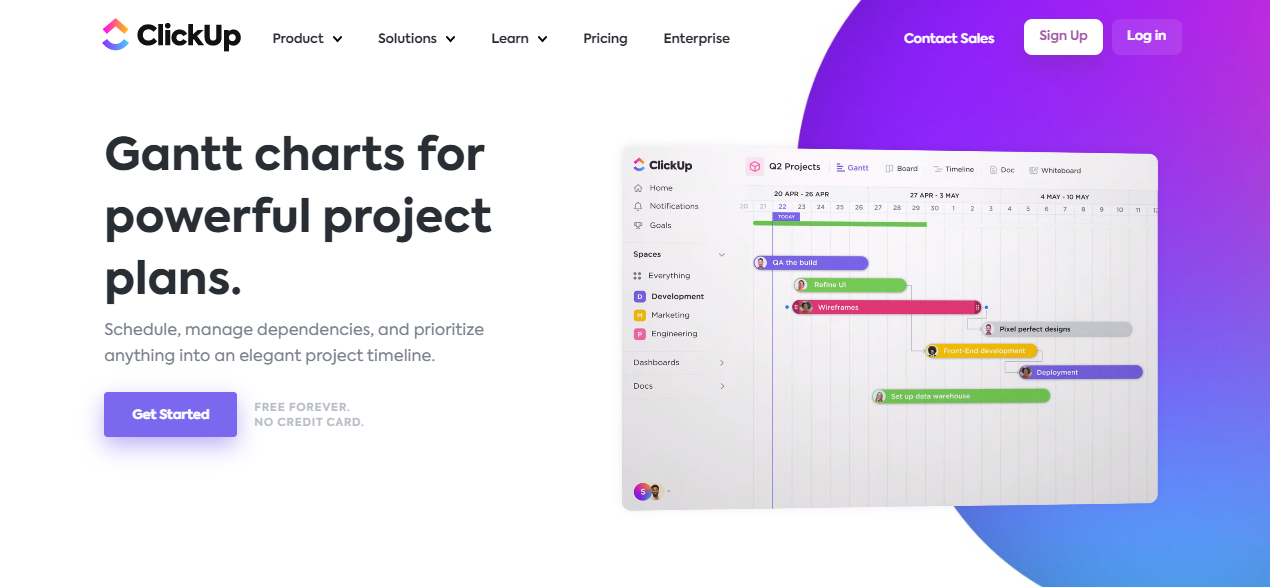
ClickUp Gantt Charts offer an easy-to-understand overview of complex projects. These charts help visualize progress, see dependencies, and enable better planning. They provide the perfect foundation to break down intimidating tasks into manageable chunks and keep everyone on the same page. With the range of features they offer, ClickUp Gantt Charts bring an unparalleled level of clarity and efficiency to any project.
Overview of Gantt Charts
Following ClickUp’s groundbreaking success as a task management and collaboration platform, its Gantt Chart feature is an innovative way for teams to plan and visualize their projects. An overview of Gantt Charts, their benefits, and their features will help teams understand the power of this tool.
Gantt Charts are a visual tool used to organize and plan tasks, timelines, and resources. They are also used to the track progress and success of projects. By splitting tasks into manageable chunks and assigning resources, teams can better manage projects and stay on track. The Gantt Chart is a dynamic tool that allows teams to easily adjust tasks and timelines, so projects can move forward efficiently.
Gantt Charts are incredibly useful for teams of all sizes. Small teams can use the tool to plan out daily tasks, while larger companies will be able to plan out multiple projects and keep track of resources. The Gantt Chart is a great way to visually represent how tasks are connected, the timeline of a project, and how resources are assigned and allocated.
The Gantt Chart also allows teams to break down individual tasks into a hierarchy of subtasks. This hierarchical structure makes it easy for teams to understand the parts of the project and how they are connected to one another. By breaking down the tasks and creating a visual representation of the project, teams can understand the scope of the project and the resources required to complete it.
Benefits of Gantt Charts
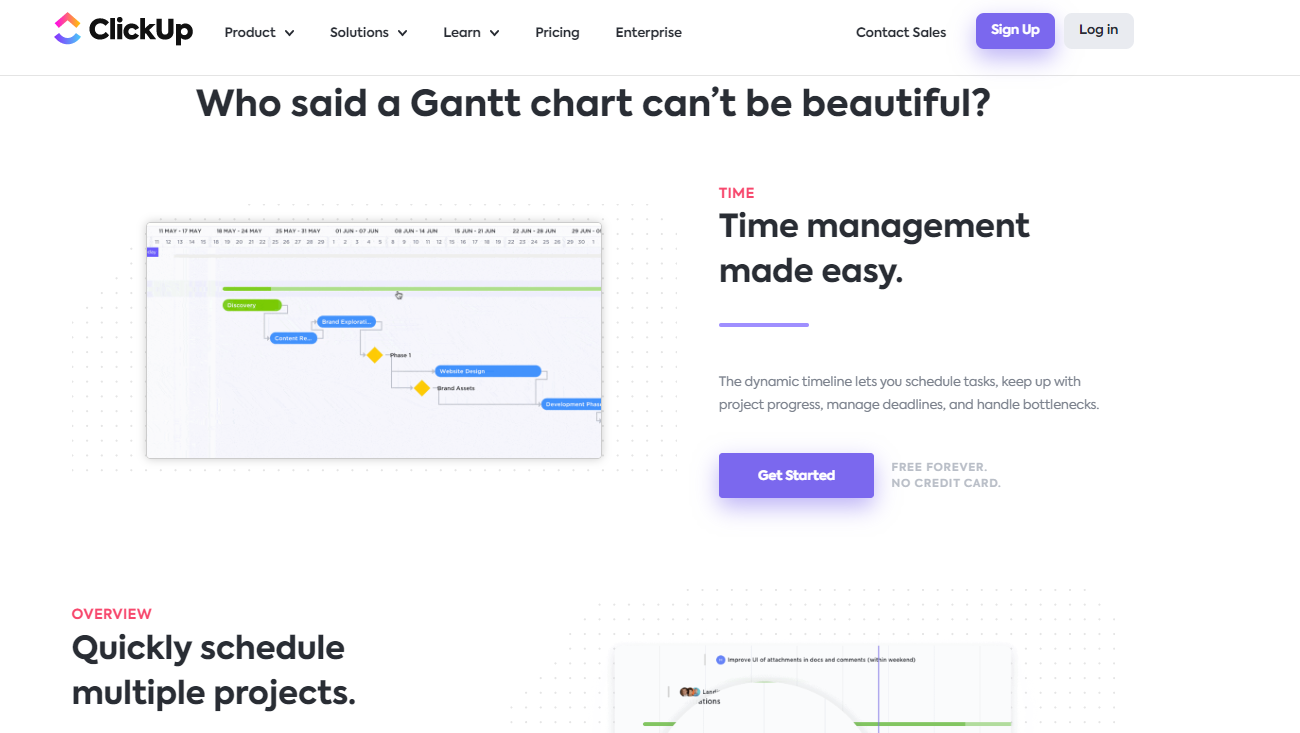
- Gantt Charts are incredibly useful tools for visualizing and planning out projects. Their unique timeline format allows project managers to easily identify potential problems and take corrective action before any challenges arise. In addition, they offer a range of benefits that provide an edge when planning and executing projects.
- Gantt Charts help project managers break down complex tasks into smaller, more manageable chunks. By doing this, they can quickly identify which tasks need to be completed and when. This allows project managers to better understand the work that needs to be done and plan their resources accordingly. Additionally, it allows project managers to stay on top of the project timeline and quickly spot any potential problems or conflicts.
- Gantt Charts also provide visibility into the progress of a project. As tasks are completed on time, they are easily highlighted on the timeline. This helps project managers quickly identify which tasks are behind schedule and take corrective action. Additionally, Gantt Charts also allow project managers to track who is working on which tasks and ensure that the right people are assigned to the right tasks.
- Gantt Charts offer clear and concise visualizations of project tasks and timelines. This allows project managers to easily identify potential problems and take corrective action before any challenges arise. With the help of Gantt Charts, project managers can ensure their projects are successful and completed on time.
Gantt Chart Features
ClickUp Gantt Charts provide powerful visualization of project progress and have a range of features to help users stay organized. With Gantt Charts, project managers can easily create task dependencies, set deadlines, and visualize the progress of the project as a whole. Gantt Charts also come with a number of additional features to make project management easier.
- Ability to easily drag and drop tasks: This feature allows users to quickly and accurately move tasks around without having to enter any manual calculations. Tasks can be moved around to adjust the timeline and dependencies of the project.
- Ability to easily add resources to tasks: Resources include people, documents, and other resources that are necessary for the completion of tasks. This feature makes it easy to keep track of who is responsible for what and to ensure that all tasks are completed in a timely manner.
- Ability to customize the look and feel of the chart: This allows users to choose from different colors and styles to make the chart more visually appealing and easier to read. Other customization options include adding notes and comments to tasks, which makes it easier to keep track of progress.
Setting Up a Project in ClickUp
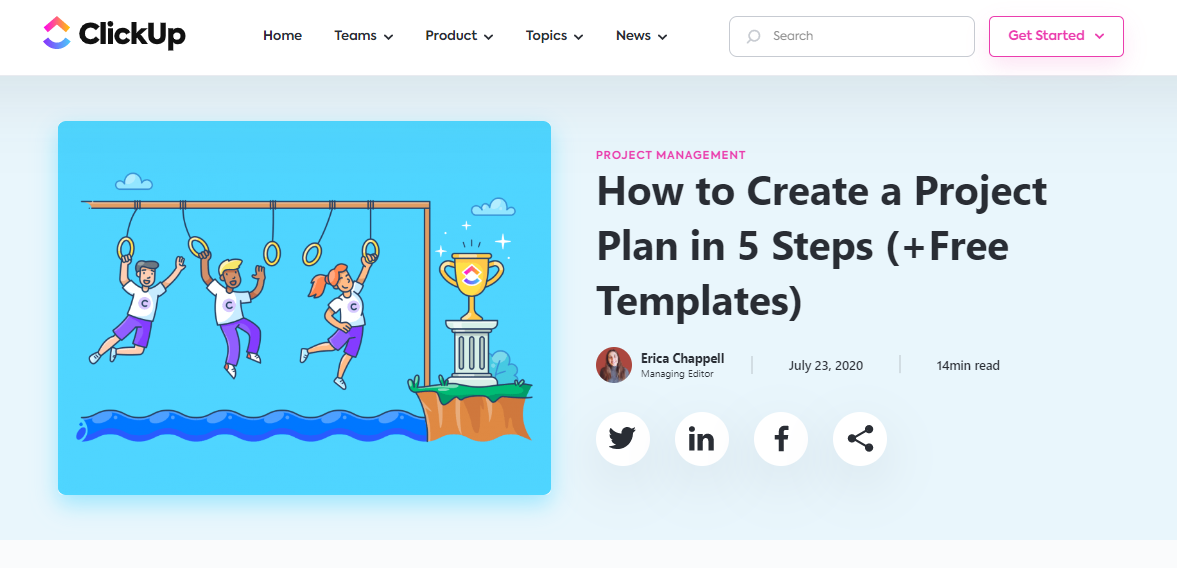
Setting up a project in ClickUp starts with creating a project, providing a clear outline of deadlines and goals to be achieved, and assigning tasks and resources needed to complete the project. This ensures everyone involved is on the same page and can collaborate effectively. From there, the project can be tracked and monitored, allowing for greater control of the project and its timeline.
Creating a Project
A project can be the key to success, but it is only successful if it is properly organized and managed. Creating a project in ClickUp can help streamline the process and make it easier to manage.
First, you will need to choose a project type. ClickUp offers a variety of options, including Gantt charts, portfolios, and dashboards. Each type has a unique list of features, so you can choose the one that best meets your needs.
Once you have chosen a project type, you can start adding tasks and deadlines. ClickUp allows you to create tasks and subtasks, assign owners, set priority levels, and add notes. You can also add deadlines for each task, so you can stay on track and ensure that each task is completed on time.
You can also assign resources to each task. ClickUp allows you to assign people, documents, or projects to each task, so you can ensure that everyone has the resources they need to complete their tasks. This feature allows you to quickly and easily keep track of who is working on what, so you can ensure that each task is completed efficiently.
Creating a project in ClickUp is easy and efficient. With its intuitive interface and comprehensive features, you can quickly and easily organize your project and ensure that it is properly managed.
Setting Deadlines and Goals
After setting up your project in ClickUp, you can set deadlines and goals to ensure that your project runs smoothly. ClickUp’s powerful Gantt Chart feature helps you keep track of your project progress, allowing you to easily visualize your project’s timeline. You can set a start and end date for each task, as well as outline important milestones in the project. You can also set dependencies between tasks so that each task depends on the completion of the previous one.
Once you have set up your timeline, you can establish clear goals for each task. ClickUp allows you to set both short-term and long-term goals for each task. Short-term goals can be set on a daily or weekly basis, while long-term goals can be set for the entire project. When setting goals, it is important to be realistic and to ensure that they are measurable. This will help you track the progress of your project and ensure that things remain on track.
In addition, ClickUp allows you to assign tasks and resources to each goal. This makes it easier to track who is responsible for what, and when the task is due. You can also add notes and comments to each goal to clarify any expectations or instructions. This helps to ensure that everyone is on the same page and working towards the same goal.
Overall, ClickUp’s Gantt Chart feature is an incredibly useful tool when it comes to setting deadlines and goals for your project. It allows you to create a timeline, set realistic goals, and assign tasks and resources to each goal. This helps to ensure that your project runs smoothly and that everyone is on the same page.
Assigning Tasks and Resources
Now that you have your project set up, it’s time to get into the nitty-gritty details. Assigning tasks and resources is a crucial part of ensuring that your project runs smoothly and efficiently.
Using ClickUp, you can easily assign tasks and resources to team members and keep track of their progress. Assigning tasks to team members is simple – just hover over the task, click the three dots, and select the assignee from the drop-down menu. You can also assign tasks to multiple team members at once, as well as set deadlines.
Another great feature of ClickUp is that you can assign resources to tasks. This is especially useful if there are certain materials or pieces of equipment needed for a task. By assigning resources to tasks, you can ensure that everyone on the team knows what is needed and when it is needed.
Once tasks and resources have been assigned, you can keep track of progress by viewing the project timeline. This timeline will show you how much progress has been made on each task and when it is due. This way, you can always stay on top of the project and be sure that everything is running according to plan.
Monitoring and Tracking Progress
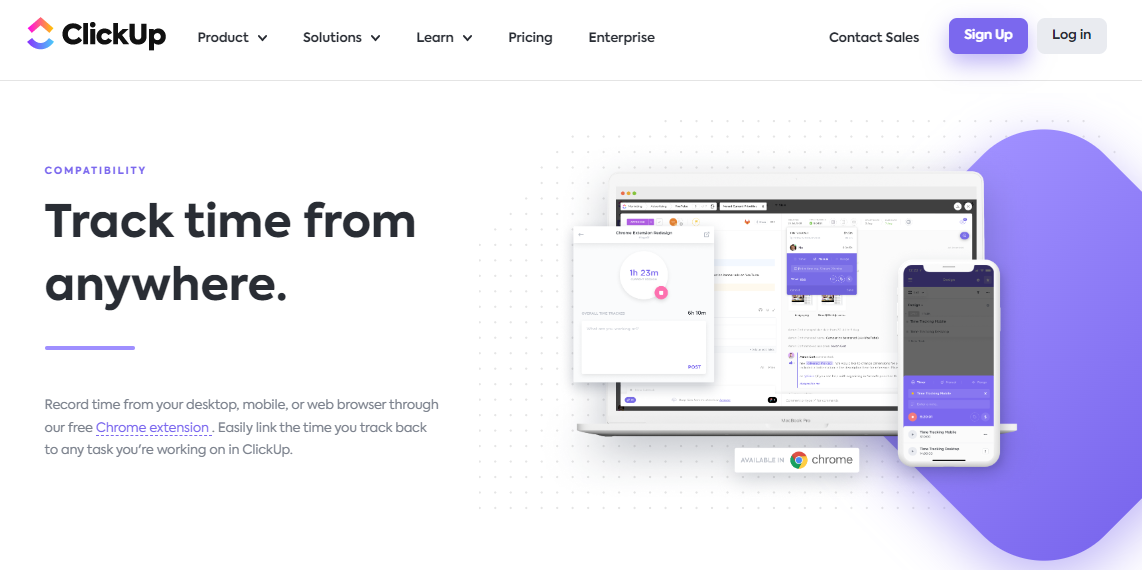
To monitor and track progress, one can view project overviews to get a broad overview of the project. From here, Gantt charts can be used to track progress at a more granular level, and reports can be generated to document it all. This allows for better management and accuracy of the project’s progress.
Viewing Project Overviews
With a centralized project space, ClickUp makes it easy to manage your workload and monitor progress. Viewing project overviews is a great way to get a birds-eye view of the progress of your project.
Start by opening the Overview tab for the project. Here you’ll find detailed information about the project, such as tasks completed, tasks in progress, and tasks yet to be started. Each task is listed along with its deadline, assignee, and progress bar. It’s a great way to quickly get a sense of where your project stands.
You can also use the Overview tab to drill down into individual tasks. Simply click on the task and you’ll be taken to the task page. Here you can view the task’s details, such as its description, assignee, and deadline. You can also make changes to the task, such as reassigning it or setting a new deadline.
The Overview tab also provides a great way to review your project’s dependencies. Dependencies are the tasks and subtasks that rely on each other to be completed. Knowing these dependencies can help you better understand the timeline of the project and make sure that nothing falls through the cracks.
Tracking Progress in Gantt Charts
Once a project is set up, tracking progress is the key to staying ahead of the timeline. Gantt charts are an efficient way of monitoring progress and keeping everyone on the project informed of the current status.
A Gantt chart is a visual representation of tasks, deadlines, and progress. Every task is represented as a bar, with the length of the bar representing the duration of the task. Dependencies between tasks are also displayed, showing which tasks need to be completed before others can start. The chart also displays milestones, which are points in time that mark the completion of a critical task or section of the project.
Gantt charts in ClickUp are highly customizable, allowing for detailed control of the visualization. Colors can be used to differentiate between tasks or categories, while task assignments are also presented clearly, making it easy to tell who is responsible for what. Data fields such as start and end dates and duration of tasks can also be changed manually, allowing for changes to be made quickly and easily.
By using Gantt charts, teams can easily see where tasks are in their progress, as well as the progress of the project as a whole. This allows everyone to stay informed and on track, ensuring that the project is completed on time and within budget.
Generating Reports
The sun is setting on another workday, and it’s time to wrap up the progress report. With the click of a button, ClickUp can create a comprehensive report on the progress made on the project. Generating reports in ClickUp offers a range of options to track progress and analyze data.
To begin, ClickUp allows users to create a variety of reports that can be customized to the user’s needs. Reports can be generated on project tasks, subtasks, and milestones. Reports can also be generated for time tracking and resource allocation, as well as detailed project activity. Additionally, users can even export their data in the form of a spreadsheet.
Customizing the reports is a breeze. Data fields can be added or removed to tailor the reports. The filter options are endless, allowing users to narrow down the data to exactly what is needed. Additionally, reports can be saved for later use, allowing users to quickly generate the same report in the future.
The reports generated in ClickUp provide an easy way to track progress and analyze data. The visuals provided by the reports make it easy to understand the data, even for those who are not data-savvy. With ClickUp, generating reports has never been easier.
Collaboration and Communication
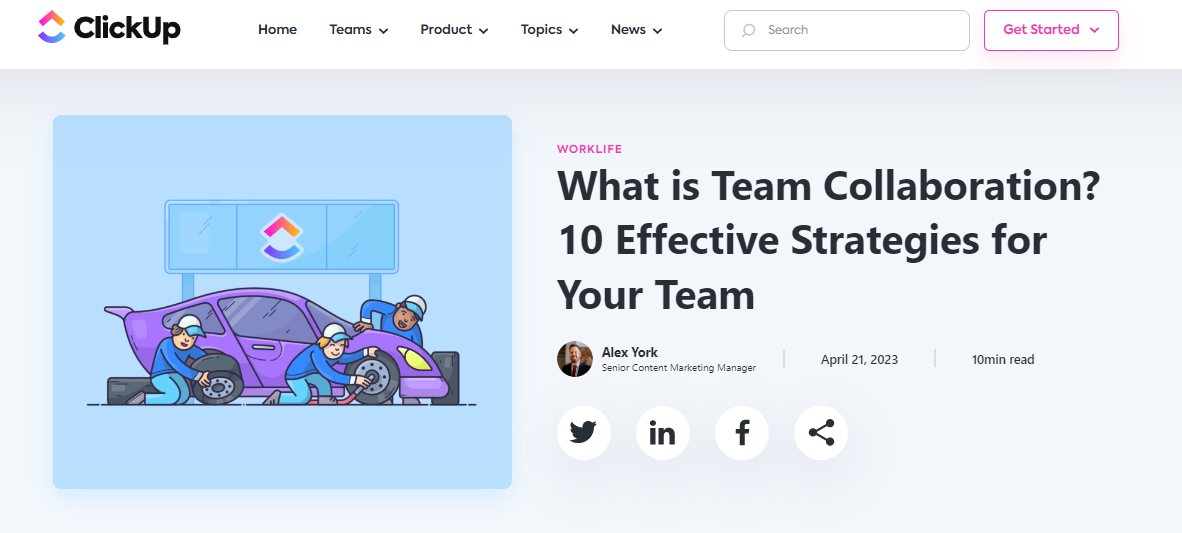
Collaboration and communication are essential elements of successful teams. Sharing projects and tasks allows team members to make progress together while chatting with each other helps to keep everyone on the same page. Managing comments ensures that all feedback is heard and addressed in a timely manner.
Sharing Projects and Tasks
Having tracked project progress and monitored team performance, the next step for effective collaboration and communication is to share projects and tasks. Sharing projects and tasks is an essential part of keeping everyone on the team on the same page. It is important to have a platform where team members can easily access projects and tasks, view updates and make changes when necessary.
Chatting with Team Members
The chat feature can also be used to provide feedback and support. Team members can quickly provide support to each other and offer helpful advice and encouragement. This can be particularly helpful for remote teams as it allows them to stay connected and collaborate in a more natural way.
Managing Comments
The power of collaboration and communication is essential when it comes to managing projects and tasks. With the ability to easily manage comments, teams are able to work together and support each other in a much more effective way. The ability to manage comments in an organized and efficient manner not only saves time and energy but also allows for greater accuracy and clarity. By having a centralized platform to track and manage comments, teams can easily share feedback, ideas, and insights without having to go back and forth through multiple channels.
Integrations and Automation
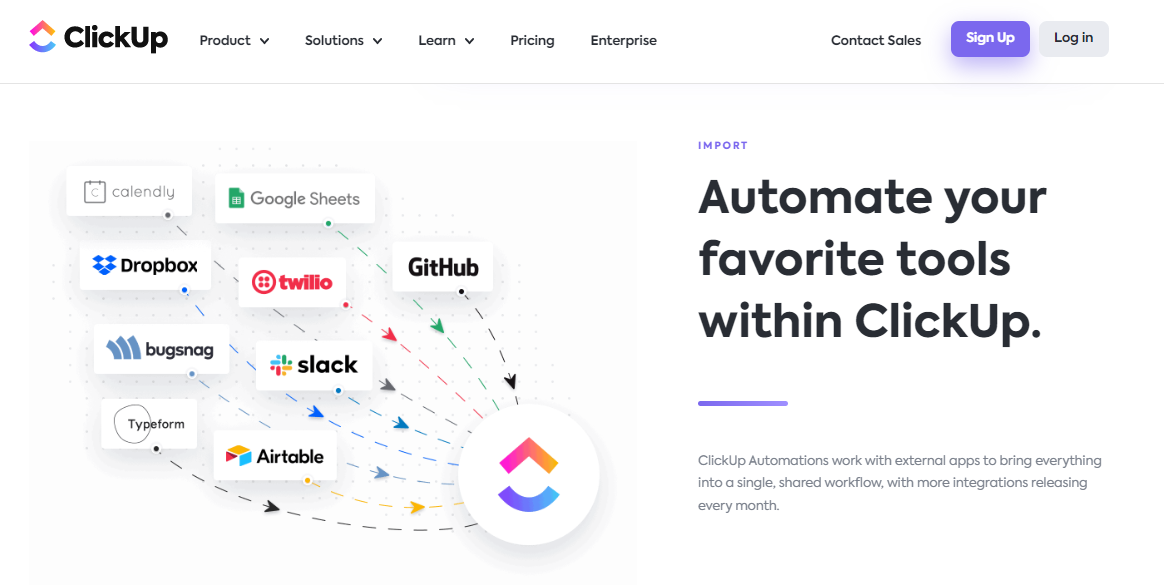
Connecting Third-Party Apps, Automating Workflow, and Utilizing ClickUp’s API are just some of the ways in which Integrations and Automation can help simplify and streamline workflows. With powerful Connections, users can easily integrate their favorite tools and make sure their workflows stay organized and up-to-date. Meanwhile, the ClickUp API helps users easily develop custom integrations to keep their tasks and data in sync.
Connecting Third-Party Apps
By connecting third-party apps, teams can quickly and efficiently unlock the full potential of their projects and make sure all necessary data is accurately stored. This integration streamlines the entire process and makes it easier to access the information that teams need.
The first thing to consider when connecting third-party apps is the range of tools that are available. ClickUp integrates with a variety of apps, such as Slack, Google Drive, and Dropbox. This integration allows teams to access the data and information within these apps directly from ClickUp. This saves time and makes it easier to keep everything organized.
Another benefit of connecting third-party apps is the ability to quickly share data. For example, a team may need to share a document from Google Drive with a client. With the integration, they can do this quickly and easily without having to switch between different applications. This saves time and ensures that everyone has access to the data they need.
Need help with ClickUp implementation? Contact Us.
Automating Workflows
Imagine never having to manually input data ever again. With the power of automation, connecting third-party apps, and utilizing ClickUp’s API, tedious and manual tasks can be eliminated from your workflow. Automating workflows allows you to quickly and efficiently complete tasks so you can focus more on the important aspects of your job.
ClickUp’s automation feature allows you to create triggers and actions that will take place when specific events occur. For example, you can set a trigger to automatically create a new task when a customer fills out a form. You can also set an action to assign that task to a specific team member. This allows your team to respond quickly to customer inquiries and ensure all tasks are completed in a timely manner.
Utilizing ClickUp’s API
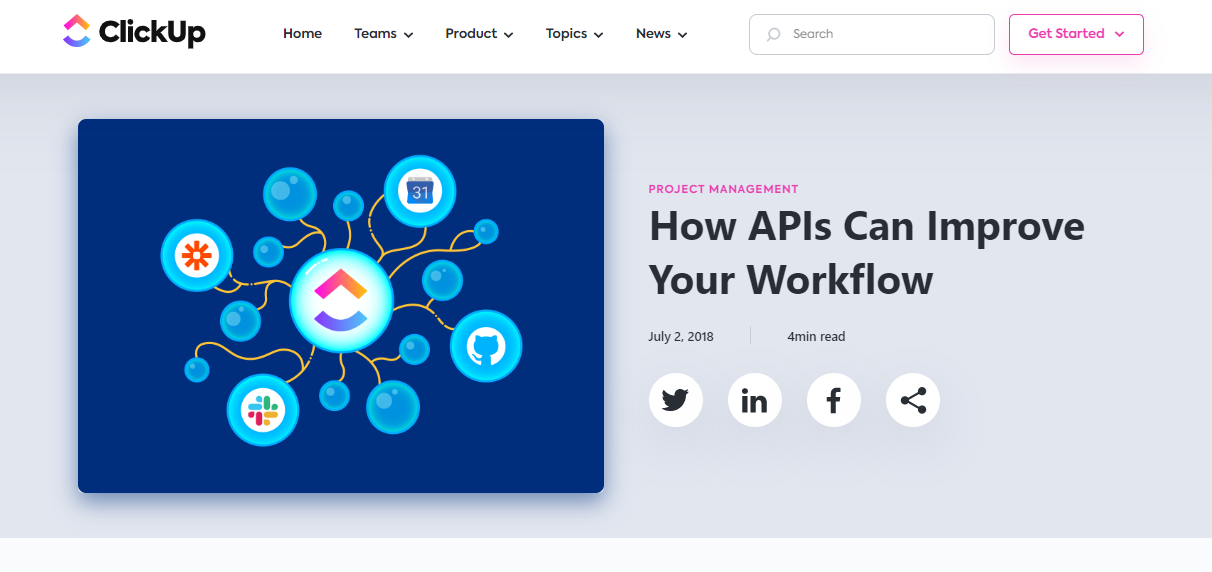
ClickUp’s Application Programming Interface (API) provides users with the capability to build custom integrations and automation so they can have greater control over their workflows. This allows users to create their own custom applications that interact with ClickUp, allowing them to design and develop their own solutions that can be tailored to their unique needs.
By utilizing ClickUp’s API, users can maximize their productivity and efficiency. With it, users can create custom applications that are tailored to their specific needs and automate their workflows so they can focus on other important tasks. It is a powerful tool that can be used to unlock the full potential of ClickUp and create a more efficient and productive work environment.
Security and Privacy

To ensure the security and privacy of data, protective measures like utilizing privacy settings and setting user permissions need to be taken. Privacy settings allow users to control how and with whom their data is shared, while user permissions allow users to assign different levels of access to different users. This helps to ensure that only those with the right access can access the data.
Protecting Data
Now that we have discussed the various ways to automate and integrate processes, it is important to consider the security and privacy of the data involved. Protecting data should be of utmost priority when considering any automation or integration. To ensure data integrity and security, there are many steps that can be taken.
The first step is to ensure that all data is properly encrypted. Encrypted data is unreadable and therefore not vulnerable to malicious intent. This can be done through a variety of methods such as using a secure virtual private network (VPN) or leveraging secure protocols like Secure Socket Layer (SSL) or Transport Layer Security (TLS). Additionally, data can be encrypted at rest, meaning that it is encrypted while stored on a disk or in a database.
As an added layer of protection, it is wise to regularly audit data access and use. This will provide insight into which users are accessing what data and when. It is also important to be mindful of the physical security of data storage systems. This can be done by limiting physical access to these systems, restricting the use of removable media, and monitoring for suspicious activity.
Finally, deploying multi-factor authentication (MFA) is an excellent way to protect data. MFA requires additional steps beyond a username and password to gain access to the data. This can include a one-time code sent to the user’s email or a biometric scan, such as a fingerprint or facial recognition. All these measures can help deter unauthorized access and protect data.
Utilizing Privacy Settings
Having discussed the various ways to automate and integrate tasks, we now turn our attention to protecting our data. Utilizing privacy settings is a great way to ensure that only the intended parties are able to view and access our data.
Privacy settings guarantee that our data is safe from unauthorized access and that our information is not shared without our permission. When it comes to setting up privacy settings, there are a few key considerations. Every platform will have different options for privacy settings, and it is important that we take the time to familiarize ourselves with the options that are available to us.
Taking the time to review the various privacy settings is key to ensuring that our data is kept secure. We can customize our settings to limit access to our data, and to allow us to control who can view our information. Additionally, we can use the privacy settings to limit the amount of data that we are sharing with other parties.
Finally, it is important to remember that we are in charge of our own data. Taking the time to review and adjust our privacy settings as needed can give us the peace of mind that our data is safe and secure. Making sure that our data is secure is an important part of keeping our information safe and private.
Setting User Permissions
Beyond the technological integrations and automation that streamline processes, ensuring security and privacy remains paramount. Setting user permissions is an integral component of an organization’s security and privacy strategy. By taking the time to determine who should have access to what data, organizations can safeguard their information and the privacy of their customers.
When setting user permissions, organizations should begin by outlining the roles and responsibilities in their organization. Once those have been established, the next step is to assign the appropriate access levels to those roles. This will ensure that personnel only have access to the data they need to do their jobs. It is equally important to periodically review user access to ensure that the privileges assigned are still up-to-date and relevant.
Pricing and Support
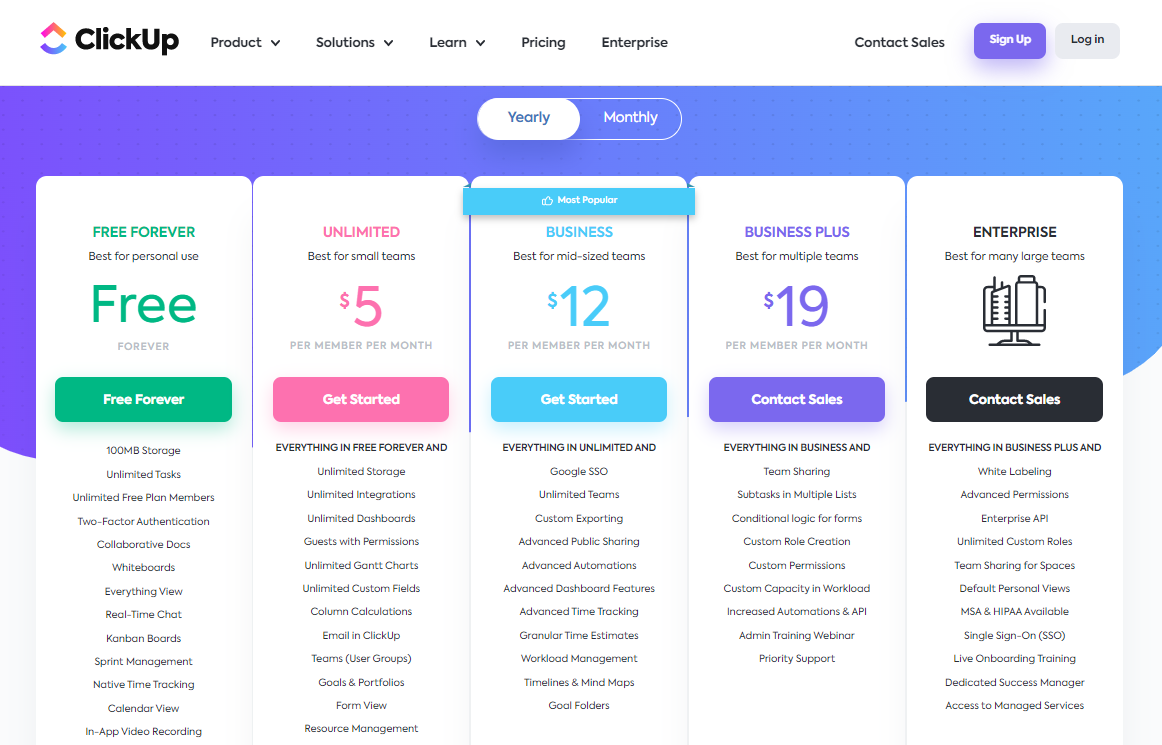
The journey of discovering the right pricing and support plan begins by exploring the platform’s pricing options. From there, customers can find the right level of support that best fits their needs, with options ranging from basic support to dedicated team members.
To begin with, there are three main pricing plans: basic, premium, and enterprise. Each plan offers a variety of features that cater to different types of businesses and their needs.
- Free plan (Best for personal use): ClickUp offers a generous free plan that provides access to numerous features and can be used indefinitely. This is a fantastic option for individuals or small teams just getting started with project management software. It is free for all.
- Unlimited plan (Best for small teams): For larger teams or organizations with more advanced requirements, ClickUp’s Unlimited plan offers unlimited storage, advanced reporting, and additional integrations. This plan is perfect for businesses that require enhanced customization and scalability. Pricing starts at $5.
- Business plan (Best for mid-sized teams): ClickUp’s Business plan is tailored for growing teams and enterprises. It includes priority support, single sign-on (SSO) capabilities, and advanced security features. This plan is ideal for businesses that prioritize data privacy and demand top-notch support. Pricing starts at $12.
- Business Plus (Best for multiple teams): The ClickUp Business Plus plan is available at a competitive rate of $19 per user per month, making it a cost-effective solution for organizations looking to unlock the full potential of ClickUp’s project management platform. With this plan, you gain access to a host of features specifically tailored to meet the needs of businesses operating at scale.
- Enterprise plan (Best for many large teams): ClickUp’s Business plan is tailored for growing teams and enterprises. It includes priority support, single sign-on (SSO) capabilities, and advanced security features. This plan is ideal for businesses that prioritize data privacy and demand top-notch support. You may contact us for price customization with the Enterprise plan that would best fit your business.
No matter what pricing plan you choose, you can be sure that you are getting access to features that will help you grow your business. For more details on pricing and plans, please visit www.clickup.com.
Support Options
The primary support option is a dedicated email address that customers can use to contact with any questions or concerns. Response times are usually within 24 hours, and customers can expect friendly and knowledgeable staff to assist them with any issue. For more complex support needs, the platform also offers phone support. Customers can dial the toll-free number to speak with a representative who can provide more in-depth support. Representatives are available during normal business hours and are happy to provide additional information or provide step-by-step instructions to resolve any issue.
The platform also provides a searchable online database of answers to common questions. Customers can use the search feature to quickly find answers to their questions, as well as tutorials and videos that provide more detailed instructions. This comprehensive resource is designed to meet the needs of customers regardless of their level of technical knowledge.
Conclusion
ClickUp brings a comprehensive project management solution with the ability to create Gantt charts. It allows for easy setup of projects with the ability to track progress, collaborate, and communicate. Additionally, it offers integrations and automation for added convenience. Security and privacy are also taken seriously, with various plans available to fit any budget. With its comprehensive set of features, ClickUp is an ideal choice for project management needs. It will help teams stay productive and organized, so they can focus on what matters most.
However, to truly take your business to new heights and unlock its full potential, partnering with a trusted digital solutions provider like Ubique Digital Solutions can make all the difference. Their expertise in implementing and optimizing project management systems, combined with their commitment to innovation and client success, ensures that you’ll have a seamless experience tailored to your unique business needs. So don’t wait any longer. Take the next step towards success and growth by following our CTA to partner with Ubique Digital Solutions today. Together, you’ll unlock the full potential of ClickUp and its Gantt chart features and revolutionize the way you manage projects.
FAQs
Q: Are ClickUp’s Gantt charts customizable?
Yes, Gantt charts in ClickUp are highly customizable. You can adjust timelines, rearrange tasks, and even color-code tasks to better suit your project’s needs.
Q: How many people can collaborate on a Gantt chart in ClickUp?
There’s no set limit to how many people can collaborate on a Gantt chart in ClickUp. It’s designed to facilitate team collaboration, so you can invite as many team members as you need.
Q: Can I share ClickUp’s Gantt charts with people outside my organization?
Yes, ClickUp allows you to share Gantt charts externally with clients, stakeholders, or anyone else who isn’t part of your ClickUp workspace. You can control what they see and can do with adjustable permissions.
Q: Is there any training or support provided for using Gantt charts in ClickUp?
Yes, ClickUp provides a variety of resources to help users get started with and master using Gantt charts, including video tutorials, help articles, and user support.


